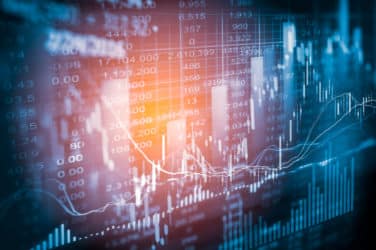
New regulations in the European Union are causing asset managers to question the nature and value of the research they use and leading to increased demand for alternative data.
MiFID II, the regulations covering financial markets in the EU, come into effect at the beginning of next year. One of the requirements of MiFID II is to separate payments for research from trading commissions to increase transparency and reduce conflicts of interest. Asset managers will have to either pay for research out of their own P&L or from research payment accounts, where they have agreed on a budget with their client. For the first time the research regulations extend from equities into fixed income, currency and commodity markets.

Brij Malkan, BCA Research
Brij Malkan, senior consultant at independent research provider BCA Research, told Markets Media that MiFID II has opened many questions and challenges that will transform the research market.
“Asset managers are asking existential questions like what is research and what is the right price and value,” he added. “Some asset managers are scrutinising service levels, questioning whether they have access to a CFA Level 1 analyst or a 15-year veteran.”
Under MiFID II, the buy side will also have to track their research consumption and evaluate its quality. As a result, asset managers are looking for ways to integrate research into their investment decisions and to track the performance of ideas, leading to increased demand for alternative data. Malkan said research content will remain king but the keys will be accessibility, ‘actionability’, and integration with investment decisions.
“The demand for alternative data is rising as research is digitised and integrated into decision making,” he said. “Asset managers either want access to an analytical feed, an API or predictive analytics. ‘Big Data’ is becoming more mainstream and core for fund managers searching for alpha.”
George Goldman, vice president of finance sales at Dataminr, told Markets Media that the alternative data provider has both sell-side and buy-side clients, and has no doubt that in the future it will provide data to research producers.

George Goldman, Dataminr
Goldman said: “The ability to leverage tools like Dataminr to seamlessly integrate differentiated breaking news alerts into a trader’s existing workflow offers a clear advantage over more traditional financial news sources.” Goldman added, “We’ve taken a world of unstructured Big Data — 500 million tweets per day — and have created a product that can alert on the companies, sectors and topics that matter most to you in real-time. Delivering what you need to know before it becomes major news.”
J.P. Morgan’s quantitative and derivative strategy group recently produced a report, Big Data and AI Strategies: Machine Learning and Alternative Data Approach to Investing, which highlighted that earnings reports and economic statistics will become less relevant as managers analyse newer data sets to trade ahead of their release.
The bank estimated that just 0.5% of the data currently being produced is analyzed. The financial industry spends 15% of the global $130bn on big data with the buy side spending between $2bn and $3bn on alternative data. This budget is expected to increase by between 10% and 20% annually.
Sanford Bragg, a principal at Integrity Research Associates, which analyzes the global investment research industry, said in a blog that the transformation of the industry due to alternative data is just beginning and needs to embraced by research providers if they want to remain relevant.
“The erosion of existing patterns of research will accelerate as more asset managers begin to use alternative data,” said Bragg. “The proliferation of alternative data is increasing its relevance to sectors beyond consumer to tech, healthcare, telecom and beyond.”
Bragg continued that it will be a challenge for research providers to integrate alternative data into research processes and produce a commercial offering. He said: “Investing in alternative data can not only differentiate the research product, it can be spun off and sold separately.”
Malkan expects an integration of research into portfolio managers’ desktops. He said: “For example, they want to see positions on the left of their desktop and research on the right. This is more than just aggregation; it’s integration.”






